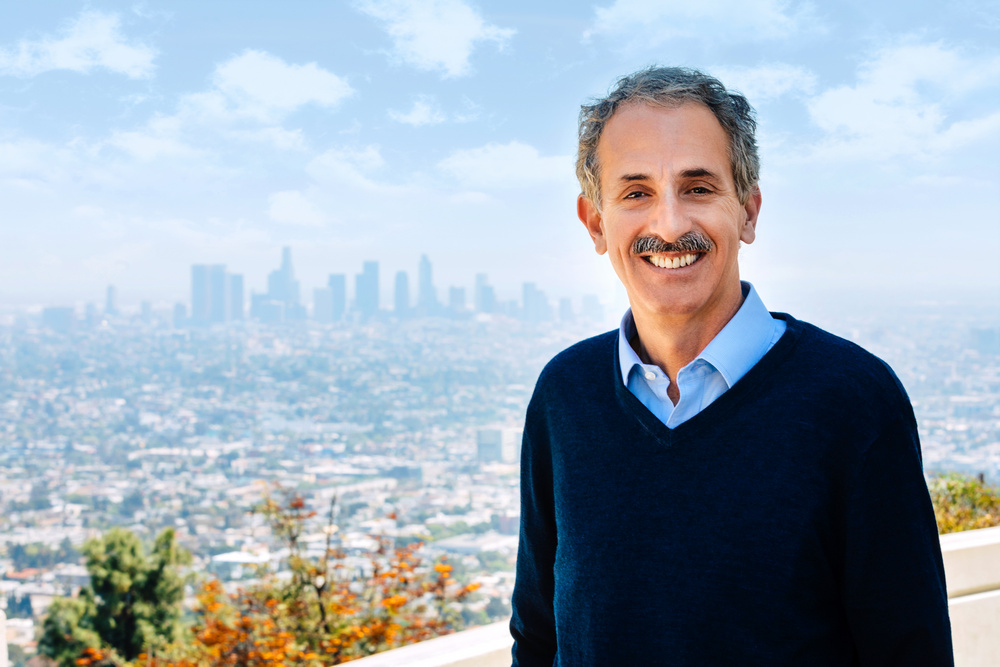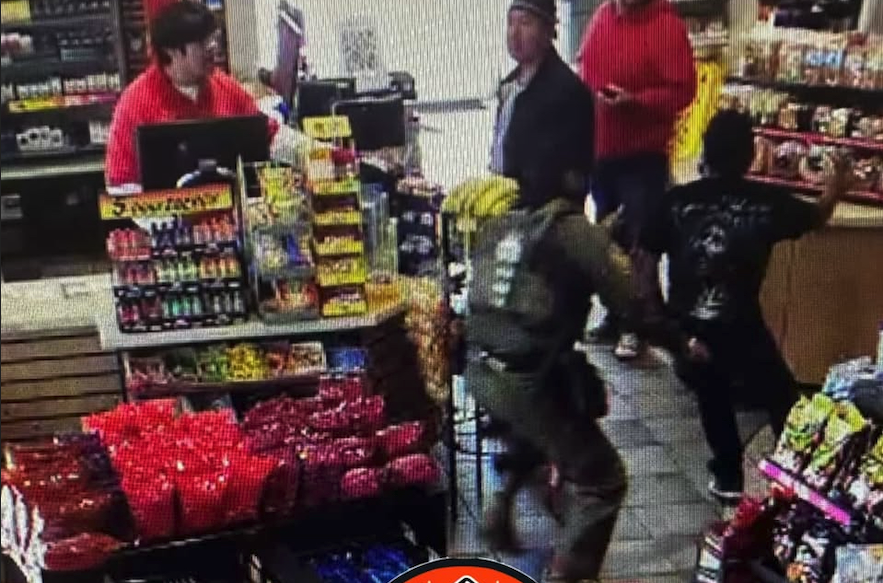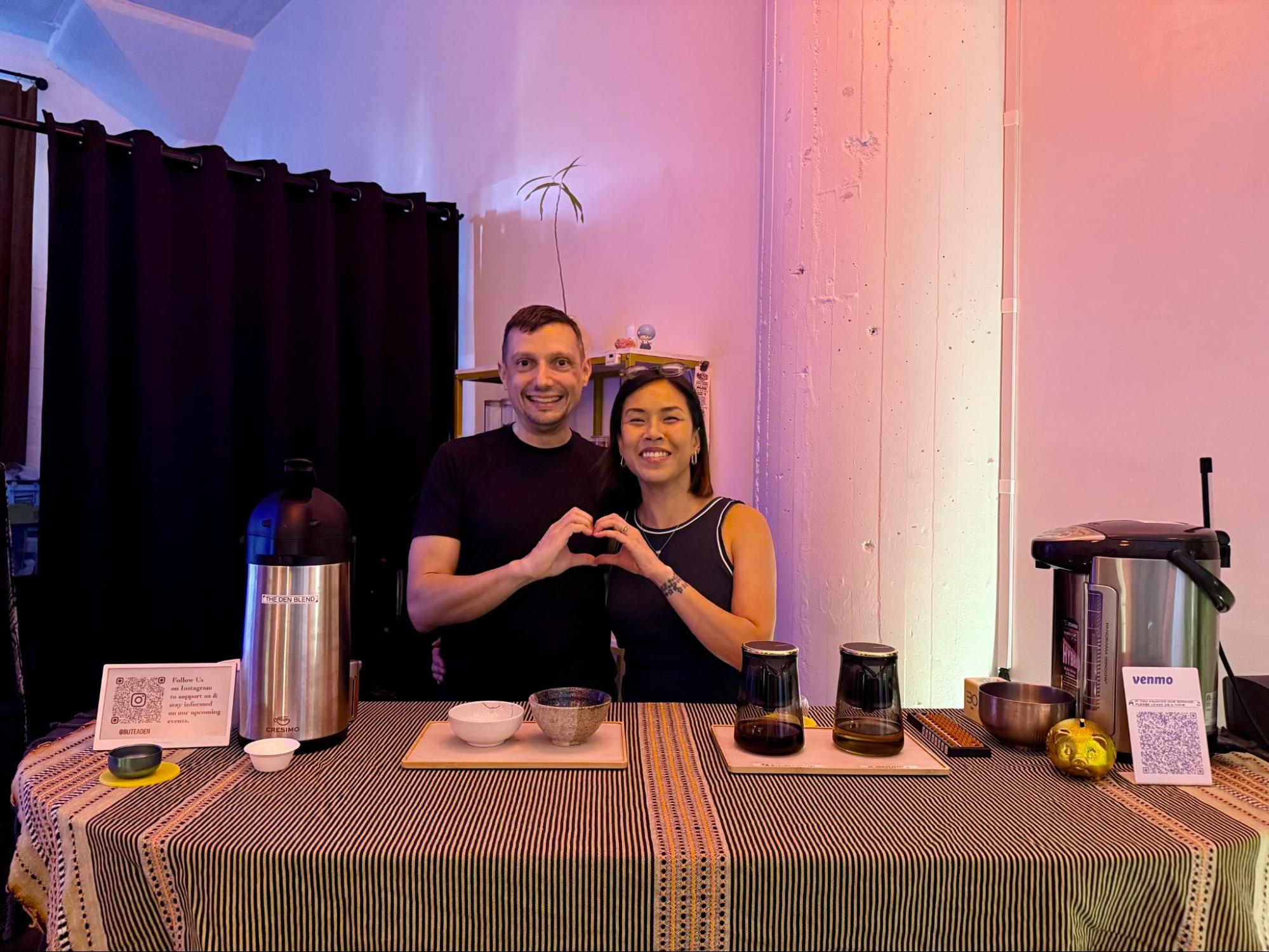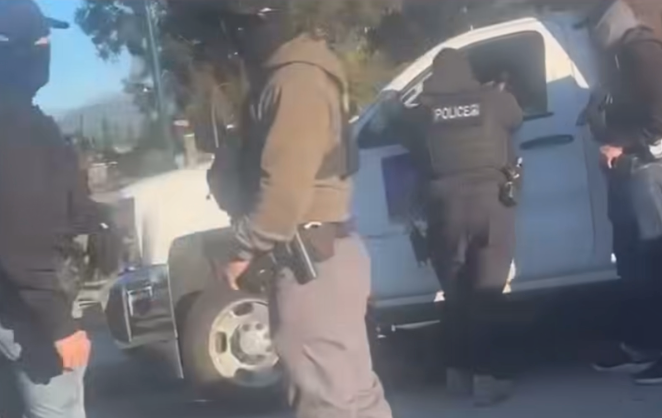Transportation is a central topic of life in Los Angeles, with urgent repercussions for the world at large. We seek city leaders who prioritize exceptional and affordable public transportation, street safety, and adequate active transportation infrastructure while centering issues related to affordable transit-oriented housing development and dealing with the city’s crisis of hit and runs. Before voting for our next L.A. mayor, we needed to know where the candidates stand on the essential issue of transportation equity.
In a collaboration with CicLAvia, Los Angeles County Bicycle Coalition, Climate Resolve, Streets For All, Los Angeles Walks, Act-LA, POWER, IKAR, Asian Pacific Islander Forward Movement, Pacoima Beautiful, and MoveLA, L.A. TACO presents a candid questionnaire given to all of L.A.’s mayoral candidates, with their answers in English, Spanish, Chinese, and Korean. All responses were provided by the candidates via email.
GETTING AROUND IN LA
How often do you walk, bike, ride transit, or otherwise get to your destinations without driving in L.A.? How would you judge the condition and importance of each of those transportation modes? How important is it for the next LA Mayor to experience all available transportation modes?
I walk and bike all the time and have used public transit (including taking my bike on the Expo line) before the pandemic. As the author of the state law authorizing Measure R to go to the ballot (infusing $35 billion into transforming our public transit system), I view getting Angelenos out of our cars as essential to the City’s future. That requires more than just building out our fixed rail system. Our transit system must be clean and safe to encourage ridership. As Mayor, I will ensure the presence of armed officers and unarmed mental health and social services outreach teams on our transit lines. I will emphasize the need for the system to be clean.
I will also move to accelerate the electrification of the bus system, expand rapid bus lanes, increase the number of buses on the most-used lines and make the bus system more user-friendly, including having digital notification of the arrival times of upcoming buses at transit stops.
I will also expand protected bikeways and speed the pace of fixing our sidewalks. I will expand the “slow streets” program to make our City more walkable.
Getting Angelenos out of our cars also means coordinating land use and transportation policy. As Mayor, I will emphasize locating housing, especially affordable housing, along transit corridors.
LA METRO SAFETY
As Mayor, how would you incorporate community-based support and safety strategies prioritizing the needs of vulnerable Angelenos?
L.A. must make a serious effort to re-imagine public safety in general, and the most appropriate roles for the LAPD, in particular — while assuring that families in every neighborhood are safe from violence and crime.Public safety requires a substantial and well-trained police force whose officers de-escalate confrontations and earn the trust and respect of all LA residents. LAPD’s crucial role in community safety must continue to evolve. It’s time to re-imagine the wide array of functions the Department performs. Currently, more than 90% of calls to the LAPD involve non-violent incidents and, in many cases, do not require an armed response. As Mayor, I’ll establish Crisis Response Teams that serve as first responders to non-violent incidents, such as contacts with mentally ill people. This way, LAPD officers can focus on serious incidents that warrant their intervention, and vulnerable residents can receive the assistance they need.
It’s critical to build trust between public safety officers and the communities they serve. As Mayor, I'll expand the Community Safety Partnership Bureau within the LAPD — assigning officers to serve communities in multi-year stints — and transition more officers to this deeply community-centered policing model.
I’ll also create one million more hours per year of neighborhood cleanup and beautification – a non-law enforcement community intervention strategy that has been shown to reduce crime.
I'll also focus on safety for transit riders, in particular, expanding the number of officers and mental health and social services teams in transit stations and in subways and light rail.
VISION ZERO
How would you assess L.A. City’s Vision Zero policy, and what concrete steps would you take to implement its Vision Zero program by 2025? What role does the Mayor have in encouraging City Council members to take political risks in supporting Vision Zero projects and commitments like the City’s Mobility Plan 2035, that may remove parking or travel lanes?
Vision Zero reflects a crucial aspiration for our City. But progress toward realizing that vision has been uneven and slow. I support more protected bikeways, slow streets, and other measures to protect bikers and pedestrians. Having served as a City Council member, I understand the complicated balances that must be struck in implementing these strategies and will work closely with Council members to understand the unique needs of their constituents and find consensus.
BETTER BUSES
L.A. Metro’s current shortage of bus operators significantly impacts bus frequency and reliability. How would you address this problem and also further increase bus frequency and ensure service reliability as ridership rebounds? Do you support Metro’s advocacy of a fare-free transit system?
As I said in response to an earlier question, I will lead the effort to expand the number of buses on our most-used lines. I will expand rapid busways, enabling bus riders to get to their destinations sooner. I support a fare-free transit system, especially students, low-income individuals, and seniors to name a few. I look at the LA Metro LIFE program and the great benefit it offers and as Mayor I will continue supporting those most in need.
BUDGET and COMMUNITY PARTICIPATION
How would you create more participation, accountability, and transparency in the budgeting process for LADOT or LA Metro projects, especially among limited English proficient and low-income communities? How would you ensure that project funds are equitably distributed?
Community participation and input is fundamental for an effective community service like public transit. When I chaired the Budget and Finance Committee of the L.A. City Council, I created the first-ever community budgeting process, taking budget hearings throughout the City and providing transparency in the process. I will do the same as Mayor, because Angelenos deserve to know and have a voice in how their money is being spent. I will ensure this process is accessible to people whose primary language is not English.Equity will be at the center of my budgeting. That means devoting scarce resources to where they are needed the most, rather than dividing them equally among Council districts, for example.
MORE CONNECTED, LESS CONGESTED
What amenities and programs do you support to reduce traffic congestion, increase active transportation, and increase transit (bus and rail) ridership? As Mayor, how would you coordinate dozens of neighboring cities and public agencies to improve local and regional access to transportation modes aside from driving?
According to the most recent Urban Mobility Report, the average car commuter in the L.A. metro area loses 119 hours a year to traffic congestion – the highest number in the US. This costs Angelenos time and money while polluting our skies. If we can move 2-3% percent of the cars off the road we’ll free up congestion-related delays by 10-15%. Angelenos need real alternatives to driving. About two-thirds of trips in the metro area are under five miles. As Mayor, I’ll invest in building a wide-reaching network of protected bike and scooter lanes throughout the City so that Angelenos can safely choose clean transit, reducing cars from the road and accidents from unprotected bike travel. I’ll invest in dedicated parking spaces for alternative mobility devices so those can serve as reliable forms of transit. My administration will also explore public-private partnerships around bike and scooter sharing that have been implemented elsewhere. In addition, I’ll expand demand-based parking to even out traffic flow and support efforts the County Metro Authority is exploring around congestion pricing and telecommuting incentives. I’ll engage private sector partners who have the best real-time data on traffic patterns to better understand and manage traffic flows. My administration will ensure that we’re supporting the transition to cleaner electric cars by investing in EV charging stations across the city in all parking structures to make electric vehicles a practical means of transportation in underserved communities.
Since the Mayor serves on the MTA Board as Chair with key appointments. I’ll use this position to coordinate effectively with regional partners.
En Español
VIAJANDO POR LOS ÁNGELES
¿Con qué frecuencia camina, anda en bicicleta, viaja en transporte público o llega a donde necesita ir sin conducir en Los Ángeles? ¿Cuál considera que es la condición y la importancia de cada uno de esos medios de transporte? ¿Cuán importante es para el próximo alcalde/alcaldesa de Los Ángeles el conocer bien todos los medios de transporte disponibles?
Camino y ando en bicicleta todo el tiempo y he usado el transporte público (incluso llevando mi bicicleta en la línea Expo) antes de la pandemia. Como autor de la ley estatal que logró que la Medida R estuviese en la boleta de votación (la cual le inyectó $35 mil millones para transformar nuestro sistema de transporte público), considero que hacer que los angelinos dejen sus carros es esencial para el futuro de la ciudad.
Esto conlleva algo más que construir nuestro sistema de trenes. Nuestro sistema de transporte debe estar limpio y seguro para aumentar el número de pasajeros. Como alcalde, garantizaré la presencia de oficiales armados y equipos (sin armas) que brinden servicios sociales y de salud mental a lo largo de nuestras líneas de transporte. Me centraré en la necesidad de mantener el sistema limpio.
También, tomaré medidas para acelerar la compra de autobuses eléctricos, expandiré los carriles rápidos para autobuses, aumentaré la cantidad de autobuses en las líneas más utilizadas y haré que el sistema de autobuses sea más fácil de usar, incluyendo la el tener horarios digitalizados de los tiempos de llegada para los próximos autobuses en las paradas de autobús.
Además, ampliaré carriles bicicleta, o ciclovías, protegidos y aceleraré el ritmo de reparación de nuestras banquetas. Ampliaré el programa de “calles lentas” para que nuestra ciudad sea más transitable.
Hacer que los angelinos dejen sus carros también requiere de coordinación del uso de la tierra y las normas del transporte. Como alcalde, me centraré en buscar espacios para construir viviendas, especialmente viviendas asequibles, a lo largo de los corredores de tránsito.
SEGURIDAD EN EL METRO DE LOS ÁNGELES
Como alcalde/alcaldesa, ¿cómo incorporaría estrategias de apoyo que se originan entre la comunidad y las de seguridad que priorizan las necesidades de los angelinos más vulnerables?
El Ayuntamiento de Los Ángeles debe hacer un serio esfuerzo para reimaginar la seguridad pública en general y el papel apropiado que debe desempeñar el Departamento de Policía (LAPD) en particular, al mismo tiempo que garantiza que las familias en todos los vecindarios estén a salvo de la violencia y el crimen.
La seguridad pública requiere de una fuerza policial esencial y bien entrenada cuyos oficiales disminuyan las confrontaciones y se ganen la confianza y el respeto de todos los residentes de Los Ángeles. El papel crucial de LAPD en la seguridad de la comunidad debe continuar evolucionando. Es hora de volver a imaginar la amplia gama de funciones que realiza el departamento. En el presente, más del 90% de las llamadas a la policía tienen que ver con incidentes no violentos, en muchos casos, no requieren una respuesta que requiera armas. Como alcalde, estableceré Equipos de Respuesta a las Crisis que funjan como los primeros en responder a incidentes no violentos, como situaciones con personas que sufren enfermedades mentales. De esta manera, los oficiales de LAPD pueden concentrarse en situaciones graves que justifiquen su intervención y los residentes vulnerables pueden recibir la asistencia que necesitan.
Es importante generar confianza entre los oficiales de seguridad pública y las comunidades a las que sirven. Como alcalde, expandiré el Departamento para la Seguridad de la Comunidad dentro de LAPD, asignando oficiales para servir a las comunidades en períodos de varios años y voy a trasladar a más oficiales a este modelo policial el cual está profundamente centrado en la comunidad.
También, ampliaré horarios para tener un millón de horas más por año para dedicarlos a la limpieza y embellecimiento de los vecindarios, una estrategia de intervención comunitaria no policial que ha demostrado reducir el crimen.
También, me concentraré en la seguridad de los pasajeros del transporte público, en particular, ampliando la cantidad de oficiales y equipos de servicios sociales y de salud mental en las estaciones del transporte público, en el metro y el tren ligero.
VISION ZERO
¿Cómo evaluaría la norma de Vision Zero de la ciudad de Los Ángeles y qué pasos concretos tomaría para implementar este programa para 2025? ¿Qué papel desempeña el alcalde/alcaldesa en exhortar a los miembros del Concilio para que tomen riesgos y apoyen la Vision Zero y se comprometan a realizar proyectos como el Plan de Movilidad de la Ciudad para 2035, el cual puede eliminar los carriles de estacionamiento o de viaje?
Vision Zero representa una aspiración primordial para nuestra ciudad. Pero el progreso hacia la realización de esa visión ha sido desigual y lento. Apoyo que haya más carriles protegidos para ciclistas, calles designadas con tráfico a baja velocidad y otras medidas para proteger a ciclistas y peatones. Habiendo servido como miembro del Concilio, entiendo cuán complicado es balancear todo para lograr la implementación de estrategias y trabajaré de manera cercana con los miembros del Concilio para entender las necesidades específicas de sus electores y alcanzar un consenso.
MEJOR SERVICIO DE AUTOBUSES
La actual escasez de operadores de autobuses de Metro afecta significativamente la frecuencia, la consistencia y el poder depender en los autobuses. ¿Cómo abordaría este problema al mismo tiempo que aumenta la frecuencia de los autobuses y garantiza la consistencia del servicio a medida que se recupera la cantidad de pasajeros? ¿Apoya la lucha por un sistema de transporte sin tarifas?
Como dije en respuesta a una pregunta anterior, lideraré el esfuerzo para expandir la cantidad de autobuses en nuestras líneas más utilizadas. Ampliaré las vías rápidas para autobuses, lo que permitirá a los pasajeros llegar antes a sus destinos. Apoyo un sistema de transporte gratuito, especialmente para estudiantes, personas de bajos ingresos y personas adultas mayores, por mencionar algunos. Conozco el programa LIFE de Metro y el gran beneficio que ofrece y como alcalde seguiré apoyando a las personas más necesitadas.
EL PRESUPUESTO Y PARTICIPACIÓN DE LA COMUNIDAD
¿Cómo fomentaría más participación, responsabilidad y transparencia en el proceso de la creación de presupuestos para los proyectos del Departamento de Transporte de Los Ángeles (LADOT, por sus siglas en inglés) o Metro, especialmente entre las comunidades con dominio limitado del inglés y otras de bajos ingresos? ¿Cómo garantizaría que la distribución de fondos entre los proyectos se realice de manera equitativa?
La participación y las opiniones de la comunidad son fundamentales para llevar a cabo un servicio comunitario efectivo como lo es el transporte público. Cuando fui el presidente del Comité de Presupuestos y Finanzas del Concilio de Los Ángeles, establecí el primer proceso comunitario para la elaboración de presupuestos y con esto se realizaron audiencias presupuestarias en toda la ciudad y proporcionando transparencia por medio de este proceso. Haré lo mismo como alcalde porque los angelinos merecen saber y tener voz en cuanto a cómo se gasta su dinero. Garantizaré que este proceso sea accesible para las personas cuyo idioma principal no sea el inglés.
La equidad estará en el centro de mi presupuesto. Esto significaría dedicar recursos en donde más se necesitan en lugar de dividirlos de manera igualitaria entre los distritos del Concilio, por ejemplo.
MÁS CONEXIÓN, MENOS CONGESTIÓN
¿Qué servicios y programas apoya usted para reducir la congestión del tráfico, aumentar el transporte activo y aumentar el número de pasajeros (en autobús y tren)? Como alcalde/alcaldesa, ¿cómo coordinaría esfuerzos entre docenas de ciudades y organismos públicos para mejorar el acceso local y regional a los diversos medios de transporte aparte de conducir?
Según el más reciente Informe de Movilidad Urbana, el viajero promedio que se desplaza en carro en el área metropolitana de Los Ángeles pierde 119 horas al año debido a la congestión del tráfico, el número más alto en los EE.UU. Esto le cuesta tiempo y dinero a los angelinos aparte de que contamina nuestros cielos. Si podemos eliminar del 2% al 3% de los carros de las carreteras, eliminaremos los retrasos relacionados con la congestión entre un 10% a un 15%.
Los angelinos necesitan alternativas reales en vez de conducir su propio carro. Alrededor de dos tercios de los viajes en el área metropolitana son de menos de cinco millas. Como alcalde invertiré en la construcción de una red amplia de carriles protegidos para ciclistas y patines eléctricos en toda la ciudad para que los angelinos puedan elegir una manera segura y un tránsito limpio, reduciendo la cantidad de carros en las carreteras y los accidentes por viajes en bicicleta. Invertiré en espacios de estacionamiento dedicados para medios de transporte alternativos que puedan servir como formas confiables para viajar. Mi administración también explorará colaboraciones público-privadas en torno a opciones como lo son las bicicletas y patines eléctricos de uso compartido que se han implementado en otros lugares. Además, ampliaré el estacionamiento basado en la demanda para nivelar el flujo de tráfico y apoyar los esfuerzos que la Autoridad Metropolitana del Condado está explorando en torno a los precios de congestión y los incentivos para el teletrabajo. Incluiré a socios del sector privado que tengan la mejor información en cuanto a patrones del tráfico en tiempo real para entender y gestionar mejor los flujos de tráfico. Mi administración se asegurará de que estemos apoyando la transición a autos eléctricos más limpios y la inversión en estaciones para cargar las baterías en todos los edificios de estacionamiento de la ciudad para hacer que los vehículos eléctricos sean un medio práctico de transporte en las comunidades desatendidas.
Dado que el alcalde es parte de la Mesa Directiva de la MTA como presidente con derecho a nombramientos clave, utilizaré este puesto para coordinar de manera efectiva con los integrantes en la región.
In Chinese
- 在洛杉矶的出行方式
在洛杉矶而不开车的情况下,您需要多久时间以步行、骑自行车、乘坐公交或以其他方式到达目的地?您如何判断每种交通方式的状况和重要性?对于下任洛杉矶市长来说,体验所有可用的交通方式有多重要?
在疫情爆发之前,我总是走路和骑自行车,并使用公共交通工具(包括在世博线路上骑自行车)。作为授权措施 R进行投票的州法律的作者(注资 350 亿美元用于改造我们的公共交通系统),我认为让洛杉矶人摆脱我们的汽车对于本市的未来至关重要。这需要的不仅仅是建立我们的固定轨道系统,我们的交通系统必须是干净和安全的,以鼓励乘客搭乘。作为一名市长,我将确保在我们的交通线路上会有武装警员和非武装的心理健康和社会服务外展团队,我再次强调,该系统必须是干净的。
我还将采取行动加快公交系统的电气化,扩大快速公交车道,增加最常用线路的公交车数量,并使公交系统更加人性化,包括在公交站台设置即将到来的公交车到达时间的数字通知。
我还将扩大受保护的自行车道,并加快修复我们人行道的步伐。我将扩大 "慢速街道 "计划,使我们的城市更适合步行。
让洛杉矶人摆脱汽车还意味着协调土地使用和交通政策。作为一名市长,我将强调在交通走廊沿线安置住房,尤其是可负担得起的住房。
- 洛杉矶地铁安全
作为一名市长,您将如何纳入以社区为基础的支持和安全策略,优先考虑弱势洛杉矶人的需求?
洛杉磯必須認真努力重新設想整體的公共安全,特別是洛城警局最適當的角色,同時保證每個社區的家庭都免受暴力和犯罪的侵害。公共安全需要一支规模庞大、训练有素的警察队伍,他们的警员能够缓和对抗,并赢得所有洛杉矶居民的信任和尊重。洛城警局在社区安全方面的关键作用必须继续发展,现在是时候重新设想该部门所履行的一系列广泛的职能了。目前,洛城警局90%以上的报警电话涉及非暴力事件,在许多情况下是不需要武装响应。作为一名市长,我将建立危机应对小组,作为非暴力事件的第一反应者,例如与精神病人接触。这样,洛杉矶警察可以集中精力处理需要他们干预的严重事件,而弱势居民可以得到他们需要的援助。
在公共安全官员和他们服务的社区之间建立信任至关重要。作为一名市长,我将扩大洛城警局内的社区安全合作局——指派警察在多年的时间里为社区服务——并将更多警察过渡到这种以社区为中心的深度警务模式。
我还将每年多创造100万小时的社区清理和美化——这是一种非执法社区干预策略,已被证明可以减少犯罪。
我还将关注公交乘客的安全问题,特别是扩大公交车站以及地铁和轻轨中的警官以及心理健康和社会服务团队的数量。
- 零死亡愿景
您如何评估洛杉矶市的“零死亡愿景”政策,以及您将采取哪些具体步骤到2025年实施其“零死亡愿景”计划?市长在鼓励市议会成员承担政治风险以支持“零死亡愿景”项目和承诺(如2035年城市交通计划)方面发挥什么作用,这些项目和承诺可能会取消停车位或行车道?
“零死亡愿景”反映了我们城市的重要愿望,但在实现这一愿景方面的进展是不平衡和缓慢的。我支持更多受保护的自行车道、慢速街道以及其他保护骑自行车者和行人的措施。作为一名前市议员,我了解在实施这些策略时必须取得的复杂平衡,并将与市议员密切合作,了解其选民的独特需求并达成共识。
- 更佳的公交车
洛杉矶地铁公司目前的公交车操作员短缺,严重影响了公交车班次和可靠性。您将如何解决这个问题,以及并随着乘客量的增加,进一步增加公交车的班次,确保服务的可靠性?您是否支持地铁公司倡导的免费交通系统?
正如我在回答先前的问题时所说,我将带头努力增加我们最常用的线路上的公交车的数量。我也会增加快速公交专用道,使乘客能够更快地到达目的地。我支持免费的公交系统,特别是对于学生、低收入者和老年人等等。我关注洛杉矶地铁的简易低收入票价(LA Metro LIFE)计划及其提供的巨大好处,作为一名市长,我将继续支持那些最需要帮助的人。
- 预算和社区参与
您将如何在洛杉矶交通局或洛杉矶地铁项目的预算编制过程中,尤其是在英语水平有限和低收入社区中,创造更多的参与、问责和透明度?您将如何确保项目资金的公平分配?
社区参与和投入是公共交通等有效社区服务的基础。当我担任洛杉矶市议会预算和财务委员会主席时,我创建了有史以来第一个社区预算编制流程,在整个城市举行预算听证会,并在流程中提供透明度。作为一名市长,我也将这样做,因为洛杉矶人应该知道这些,并在他们的钱如何花费方面有发言权。我将确保这个过程对母语非英语的人开放。公平将是我预算编制的中心。比如说,这意味着将稀缺的资源用于最需要的地方,而不是无脑地平均分配给议会各区。
- 高连通,低拥堵
您支持哪些便利设施和计划来减少交通拥堵、增加交通流动量、和增加公交(公共汽车和铁路)乘客量?作为一名市长,除了开车之外,您将如何协调数十个邻近城市和公共机构,以改善当地和区域交通方式?
根据最新的《城市交通报告》,洛杉矶都会区的平均汽车通勤者每年因交通拥堵而损失 119 小时,这是全美国最高的数字。这会在污染我们的天空的同时也浪费了洛杉矶人的时间和金钱。如果我们能将 2-3% 的汽车驶离道路,我们将减少 10-15% 与拥堵相关的延误。洛杉矶人需要真正的驾驶替代方案。大都会地区约有三分之二的行程在5英里以下,作为一名市长,我将在全市范围内投资建设一个覆盖范围广泛的受保护自行车和滑板车车道网络,这样洛杉矶人就可以安全地选择清洁的交通工具,减少路上的汽车和无保护自行车出行造成的事故。我将为替代移动设备投资专用停车位,以便这些停车位可以作为可靠的交通方式。我的政府还将探索已在其他地方实施的围绕自行车和滑板车共享的公私合作伙伴关系。此外,我将扩大基于需求的停车,以平衡交通流量,并支持郡地铁管理局正在探索的拥堵定价和远程办公激励措施的努力。我将与拥有最佳实时交通模式数据的私营部门合作伙伴合作,以更好地了解和管理交通流量。我的政府将通过在全市所有停车场建设电动汽车充电站,使电动汽车成为服务不足社区的实用交通工具,从而确保我们支持向更清洁的电动汽车过渡。
由于市长在大都会交通管理局董事会担任主席并担任重要职务,我将利用这个职位与区域合作伙伴进行有效协调。
In Korean
저는 팬데믹이 발생하기 전에는 항상 걷고 자전거를 타며 대중교통(엑스포 라인에서 자전거 휴대하고 타기 등)을 이용했습니다. 투표에 참여할 수 있도록 법안 R(Measure R)을 승인하는 주법의 발의자로서(350억 달러를 대중교통 시스템 혁신에 투입), 저는 로스앤젤레스 시민들을 자동차에서 벗어나게 하는 것이 시의 미래를 위해 중요한 일이라고 생각합니다.
이를 위해서는 단순히 고정된 철도 시스템을 구축하는 것 이상의 노력이 필요합니다. 탑승률을 높이려면 대중교통 시스템이 깨끗하고 안전해야 합니다. 시장으로서 저는 대중교통 노선에 무장한 경찰과 비무장한 정신건강 및 사회복지 지원 팀을 배치할 것입니다. 저는 깨끗한 대중교통 시스템의 필요성을 강조할 것입니다.
또한 버스 시스템의 전기화를 빠르게 추진하고, 급행 버스 차선을 확대하며, 이용 빈도가 높은 노선의 버스 수를 증설하고, 버스 정류장에 버스의 예상 도착 시간을 표시하는 디지털 알림 서비스를 구축하는 등 버스 시스템을 더욱 사용자 친화적으로 만들기 위한 조치를 취할 것입니다.
또한 보호막이 설치된 자전거 도로를 확대하고 보도의 보수 공사 진행 속도를 높일 것입니다. 저는 우리 시를 걷기 좋은 도시로 만들기 위해 '슬로 스트리트(Slow streets)' 프로그램을 확대할 것입니다.
로스앤젤레스 시민들의 차량 이용을 줄인다는 것은 토지 이용 및 교통 정책을 조정한다는 의미이기도 합니다. 시장으로서 저는 대중교통 회랑을 따라 주택, 특히 적정 가격대의 주택 마련에 주안을 둘 것입니다.
L.A.는 모든 이웃의 가족이 폭력과 범죄로부터 안전하다는 사실에 안심하면서 일반적으로 공공안전, 특히 로스앤젤레스 경찰국(Los Angeles Police Department, LAPD)의 가장 적절한 역할을 재해석하기 위해 진지한 노력을 기울여야 합니다.
공공안전을 위해서는 갈등을 완화하고 모든 LA 시민들의 신뢰와 존경을 받는 충분히 훈련받은 경찰 인력이 필요합니다. 지역사회 안전에서 LAPD의 중요한 역할은 계속 진화해야 합니다. 부처별로 수행하는 광범위한 기능을 재정비해야 할 때입니다. 현재 LAPD에 들어오는 신고의 90% 이상이 비폭력 사건과 관련되어 있으며 대부분의 경우는 무장 대응이 필요하지 않습니다. 저는 시장으로서 정신질환자와의 접촉과 같은 비폭력 사건에 응급 의료요원 역할을 하는 위기대응팀을 구축할 것입니다. 이러한 방식으로 LAPD 경찰관은 개입이 필요한 심각한 사건에 집중할 수 있고 취약계층의 주민들은 필요한 지원을 받을 수 있습니다.
공공안전 책임자와 이들이 봉사하는 지역사회 간에 신뢰를 구축하는 것이 중요합니다. 시장으로서 저는 경찰관을 배정하여 다년간 지역사회에 봉사하도록 LAPD 내 지역사회 안전파트너십 사무국(Community Safety Partnership Bureau)을 확대하고 더 많은 경찰관을 심도 높은 지역사회 중심의 치안 모델로 전환할 것입니다.
저는 또한 범죄 예방이 입증된 비법집행(non-law enforcement) 지역사회 개입 전략인 동네 정화 및 미화를 위해 연간 100만 여 시간을 할애할 것입니다.
또한 대중교통 이용객의 안전, 특히 대중교통 역사와 지하철 및 경전철 내에 경찰관, 정신건강 및 사회복지 팀의 수를 확대하는 데 주안을 둘 것입니다.
Vision Zero는 우리 시의 중요한 열망을 반영합니다. 그러나 비전 정책이 동등하지 않고 더디게 진행된다는 사실을 서서히 깨닫고 있습니다. 저는 자전거 이용자와 보행자를 보호하기 위해 보호막이 설치된 자전거 도로 증설, 슬로 스트리트와 그 밖의 조치를 지지합니다. 시의회 의원을 역임한 경험이 있기에 이러한 전략을 실행하는 데 있어 처리해야 하는 복잡한 균형을 이해하고 있으며, 시의원들과 긴밀히 협력하여 각 유권자의 필요한 사항을 이해하고 그에 대한 합의점을 찾을 것입니다.
앞선 질문에 답변드린 바와 같이 이용도가 높은 노선의 버스 증편에 앞장서겠습니다. 급행버스 노선을 확충하여 버스 이용객이 목적지에 더 빨리 도착할 수 있도록 하겠습니다. 특히 학생, 저소득층, 노인 등을 포함한 무상 운임 대중교통 시스템을 지지합니다. 저는 LA Metro LIFE 프로그램과 이 프로그램이 제공하는 큰 혜택을 살펴보고 있으며 시장으로서 가장 도움을 필요로 하는 분들을 계속 지원할 것입니다.
대중교통과 같은 효과적인 지역사회 서비스를 위해서는 지역사회 참여와 의견이 필수적입니다. L.A. 시의회 예산재정위원회(Budget and Finance Committee) 의장직을 맡았을 때 저는 최초로 지역사회 예산 책정 절차를 확립해 시 전역에서 예산 청문을 실시하고 절차에 투명성을 제공했습니다. 로스앤젤레스 시민들은 자신의 세금이 어떻게 사용되고 있는지 알 권리가 있고 의견을 피력할 자격이 있기 때문에 시장으로서 저 역시 그렇게 행동할 것입니다. 저는 영어가 모국어가 아닌 분들도 이러한 과정에 참여할 수 있도록 할 것입니다.
형평성이야말로 예산 책정의 중심이 될 것입니다. 이는 시의회 구역에 균등하게 분배하는 대신 부족한 자원을 가장 필요로 하는 곳에 투자하는 것을 의미합니다.
가장 최근의 도시 이동성 보고서(Urban Mobility Report)에 따르면 LA 대도시 지역의 평균 자동차 출퇴근자들은 교통 혼잡으로 인해 연간 119시간을 길에서 잃어버린다고 하며, 이 수치는 미국에서 가장 높은 기록입니다. 이는 대기를 오염시키면서 로스앤젤레스 시민의 시간과 비용을 앗아가는 것입니다. 도로에서 차량의 2~3%를 줄일 수 있다면 정체로 인한 지연을 10~15% 해소할 수 있습니다.
로스앤젤레스 시민은 운전 이외의 진정한 대안이 필요합니다. 메트로 지역 이동의 약 2/3가 5마일 미만입니다. 시장으로서 저는 로스앤젤레스 시민들이 깨끗한 대중교통을 안전하게 선택하여 도로에서 자동차 수를 줄이고, 보호 조치가 마련되어 있지 않는 도로에서 일어나는 사고를 예방할 수 있도록 시 전역에 걸쳐 보호벽이 설치된 광범위한 자전거 및 스쿠터 전용 도로망을 구축하는 데 투자할 것입니다. 저는 대체 이동 수단을 위한 전용 주차공간에 투자하여 이러한 이동 수단이 안정적인 교통 형태가 될 수 있도록 할 것입니다. 제 행정부는 또한 다른 지역에서 실행된 자전거 및 스쿠터 공유와 관련된 민관 파트너십을 모색할 것입니다. 또한 교통 흐름을 원활하게 하기 위해 수요 기반의 주차를 확대하고 혼잡시간대 요금 및 재택근무 인센티브와 관련하여 카운티 메트로 당국(County Metro Authority)이 모색하고 있는 활동을 지원할 것입니다. 교통 흐름을 충분히 이해하고 관리하기 위해 교통 양상에 대한 최고의 실시간 데이터를 보유한 민간 협력업체와 함께할 것입니다. 제 행정부는 전기 자동차가 소외된 지역사회에서 실용적인 교통수단이 되도록 도시 전역의 모든 주차 구조물에 EV 충전소 설치에 투자함으로써 깨끗한 전기 자동차로의 전환을 지원할 것입니다.
시장은 주요 임명권을 가진 의장으로서 MTA 위원회에서 봉사하기 때문입니다. 저는 이 직책을 이용하여 지역 협력업체와 효과적으로 협력할 것입니다.







